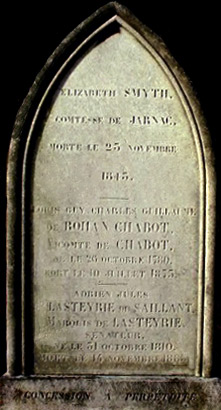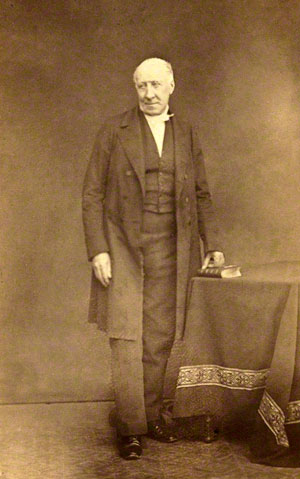I have often stated, OK possibly to the point of boredom of our readers, that Thurles & Tipperary both as a town & county have contributed more to Irish history nationally, than any other county in Ireland.
Realise how Thurles is being, dare I say ‘brutally victimised,’ yet again, in not being allowed to reveal to the world its undisputed contribution to Ireland’s powerful historic past.
The Morpeth Roll is about to embark on a 14-month tour of Ireland, from NUI Maynooth to Westport, Derrynane, Clonmel, Kilkenny, Belfast, Dublin and back to NUI Maynooth, hopefully free of charge. Disappointingly however there is no mention of Thurles in this list of viewing venues.
(Imagine this Morpeth Roll displayed beside the Derrynaflan Chalice in ‘The Source,’ exhibition centre, but alas we continue to elect indifferent, unimaginative town & county Managers, politicians & county/local councillors, all whom remain hell bent on stealing bread from the mouths of Tipperary’s future generations.)
What has Thurles got to do with the Morpheth Roll, I hear you say? Answer quite a lot really, in fact in association, this Roll has more to do directly with Thurles than possibly anywhere else it will visit on this proposed tour, particularly with regard to the Great Famine period here in Thurles, (1845-1850).
This testimonial Morpeth Roll comprises a farewell address signed by approximately 275,000 people on 652 individual sheets of paper. These sheets were subsequently joined together to create a continuous length of paper, approximately 412 meters in length (Note: In relation to length Croke Park is only 145 meters long), which was rolled onto a mahogany spool. The idea for the Morpeth Roll came as the brain child of Augustus Frederick FitzGerald, (1791-1874) 3rd Duke of Leinster, residing in Carton House, Co Kildare and it was presented to George Howard (Lord Morpeth) at the Royal Exchange, Dublin, in September 1841, following his defeat in the 1841 general election, latter which consequently led to Lord Morpeth’s departure from Ireland as then Chief Secretary.
Meanwhile, Francis James Mathew, 2nd and last Earl of Llandaff, had been a spendthrift. To pay his enormous racing and gambling debts, he had sold all the family estates in Wales and some of his Irish estates, while heavily mortgaging the remainder including Thurles & Thomastown. He died suddenly and intestate in Dublin on 12th March 1833, leaving no issue by his wife Gertrude La Touche, of Harristown, Co. Kildare.
Lady Elisha Mathew
These divided estate lands in Tipperary then passed to his sister, Lady Elisha (Elizabeth) Mathew, an eccentric individual, born in 1781, and who died unmarried at her house in Molesworth St., Dublin, on 14th December 1841, the same year the Morpeth Roll was presented to the aforementioned George Howard. (Click on images left for greater definition.)
Following her death, Lady Elisha Mathew, through her Will, bequeathed the Mathew, Earl of Llandaff (Welsh: Eglwys Gadeiriol Llandaf,) estates, including Thurles, Tipperary, (1,713 acres in the barony of Eliogarty and part of the Thomastown estate containing 2,378 acres in the barony of Clanwilliam,) to:-
(1) Her cousin the Comte de Jarnac,Viscount Chabot, of the Rohan family of France who had married Elizabeth Smyth (Feb 5th 1777), (Sister of Sir Skeffington Smyth of Tinny Park, county Wicklow,) Elisha’s aunt, sister of Elisha’s mother.
(2) Captain William Mathew, Elisha’s son (Born out of wedlock & fathered by the Prince Regent, latter who became King George IV ) former who died without issue in 1845.
(3) James Daly, later 1st Baron Dunsandle, who married Maria, daughter of Sir Edward Skeffington Smyth, maternal uncle of Lady Elisha.
Lady Elisha’s early death, possibly caused by alcohol abuse, revealed that there were mortgages amounting to £104,200 on her estates, £66,200 on Thurles and £38,000 on Thomastown. The total annual rents expected from both estates were only £4,500 per year.
Thus Louis Guy Charles Guillaume de Rohan Chabot (Vicomte de Chabot,) (1780-1875) son of Louis Charles Guillaume de Rohan Chabot 1740-1813, took ownership of the town of Thurles from 1842 until he sold it eventually some 17 years later, in 1859.
Now wishing to manage his newly inherited estates, while still remaining resident in France, Vicomte de Chabot, appointed the aforementioned 3rd Duke of Leinster, Augustus FitzGerald, to ‘Keep an Eye,’ on Thurles on his behalf. With Count Chabot’s consent, Augustus FitzGerald in turn appointed Mr John Cahill, a Thurles Solicitor as agent manager and rent collector to the Thurles Estates, operating from Llandaff House, latter current day home to the offices of P.J. O’Meara Solicitors, in Liberty Square, Thurles.
Aided partly by the newly introduced Gregory Clause (Named after William Gregory, Coole Park, Gort, an MP for Dublin who originally suggested it,) Thurles Land Agent John Cahill now set about ‘earning his keep.’
Quarter Acre Gregory’s Gregory Clause
Described by Irish nationalist activist & elected MP for Tipperary, John Mitchell (1815 – 1875), as “the cheapest and most efficient of the ejectment acts,” (Ejectment Acts: Legal action taken to recover possession of land that is being held by somebody else, mainly at this time tenants.) William Gregory, nicknamed ‘Quarter Acre Gregory,’ proposed to the British Parliament that any tenant rated at a net value not exceeding £5 should be assisted to emigrate by the Guardians of the Union, the landlord to forego any claim for rent (Could this be considered as an early eighteenth century Property Bubble bursting & the granting of Debt Forgiveness.) and to provide such a fair and reasonable sum as might be deemed necessary for the emigration of such occupier, the guardians being empowered to pay for the emigration of families any sum not exceeding half what the landlord was prepared to forego, the same to be levied off the rates. On the night when the ‘Gregory Clause’ passed the Committee of the House of Commons, there were present in the House 125 members, many of them Irish, and of those 125 present only 9 voted against this measure.
After all, only a few weeks away, across the Atlantic, there lay outstretched to all who wished, a land flowing with ‘milk & honey,’ with millions of then unoccupied acres, all teeming in natural resources. Why not start a new career, in that new world of America, for those willing to leave Ireland, and thereby decrease the pressure on the resources then afforded the wealthy at home? Surely such an effort would be most humane to those willing to emigrate. (Does this idea sound familiar to residents in our modern day Eire? )
Clearance of Tenants off the Thurles Townslands of Seskin, Leugh, Tooreen and Farranreigh
Following this Gregory Clause being entered into law, Landlords began making use of the Irish famine to effect clearances of tenants from off small holdings which they then amalgamated into more economic holdings. This letter from John Cahill, agent and rent collector for the Thurles Estate, to the Duke of Leinster, Trustee for Vicomte de Chabot to whom Lady Elisha Mathew had willed the Estate, proposes to evict all those who had not paid their rent while offering assisted emigration to those with a better record of payment.
To His Grace the Duke of Leinster.
Landaff Lodge,
Thurles
February 19, 1849.My Lord Duke,
I take leave to submit to Your Grace, as acting Trustee under the will of the late Honourable Lady Elisha Mathew, a statement of facts in reference to the townlands of Seskin, Leugh, Toureen and Farranreigh, being portion of the Thurles estate to which I am agent.
It appears by the schedule forwarded herewith that these townlands up to the year 1845 produced an annual well-paid rental of £800.15s.8d., but, owing to causes which are too well known to occupy Your Grace’s time in the detail, they have become comparatively useless in the hands of the present occupiers, an arrear of £1,129.0s.8d. having accrued to the 1st May 1848, which may be considered as totally lost.
I may indeed safely affirm that there are but few tenants on these townlands from whom I can, with any reasonable certainty, calculate upon receiving a year’s rent in 1849. The lettings referred to in the schedule do not at all represent the actual condition of these townlands which are now subdivided into several small holdings occupied by persons of whom are recipients of outdoor relief, and majority have no means to render the sufficiently productive even for their support. Under all the circumstances, it appears to me that favourable opportunity now presents itself in the prevailing readiness of the peasantry to give up land (heretofor so tenaciously clung to) to render this portion of the property productive, which I do not see any likelihood of its being made in the present state. My plan, which I am now in a position to carry out if the necessary funds are provided, is to remove every defaulting occupier from these townlands by the execution of Ejectment Haberes which I have already obtained against them, and then to divide the land into moderate sized farms for which solvent tenants at reasonable rents can be readily provided. It will be, however, only right and necessary to make distinction between cases of persons to be so dispossessed, and, where the party has paid or endeavoured to pay as far as he was able, to give some means of leaving the country or establishing himself in another place.
There will also be many expenses to be defrayed such as Country Cess and Poor Rates, both accruing and in arrears, on the lands so taken up. It is quite impossible to make any precise calculation of the sum of money necessary for the above purpose, but having considered the matter very carefully, I will undertake it not to exceed 700 and am of the opinion that 600 would be sufficient. It is for the interest of every party connected with the Estate that this arrangement should be carried out, otherwise the lands are certain unproductive and rather an encumbrance than a benefit. It may be objected that this is not within the scope of the trusts created by the will of Lady Mathew, but assuming that no party interested will refuse to assent to such an application of any funds that may be available, I trust your Grace will think that no real risk worth consideration can be incurred, and that very considerable benefit both present and prospective will be conferred on the tenant for life in possession, the reversioners and creditors of the estate by adopting my suggestions.I have the honour to remain,
Your Grace’s most obedient and very humble servant,
John Cahill.
This plan, suggested by Cahill, would now wipe out the once existing small village of Farranreigh, situated on BoherNaMona Road, Thurles, forever, from our North Co Tipperary landscape.
Find out more on this and other historical facts by making a trip to St Mary’s Famine Museum, Thurles, Co Tipperary, this Summer.



Will the government allow me to display the Derrynaflan Chalice on Thurles Info. It seems they don’t like Tipperary people looking at it.